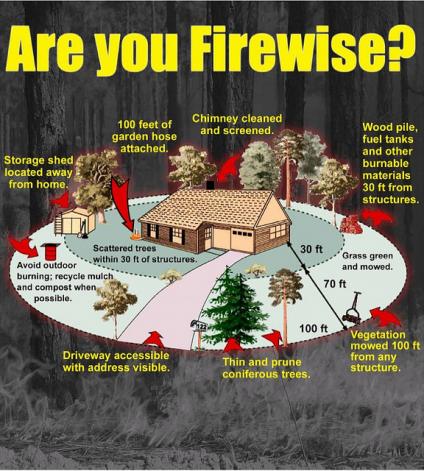October 9, 2018 - By Kaari Carpenter, Fire and Aviation Management, USDA Forest Service - More and more communities are now near or within forests. In fact the area where unoccupied land and human development meet has a name and it’s called the Wildland Urban Interface, or WUI.

The WUI is the most challenging area of the forest for wildland firefighters to suppress fire. Here fire transitions from trees and brush to homes and vehicles. This transition creates increased risks and costs for all involved.
Largely because of increased development of the WUI, a record number homes, more than 12,000, and other structures, were destroyed by wildfires in 2017. But this doesn’t need to happen. If you live where your front door meets the forest, you can do your part to make sure your home is as resistant to wildfire as possible.
Research has shown that reducing a structure’s vulnerability to flying embers during a wildland fire is the most effective way to reduce the risk of a catastrophic fire on your property. This is because burning embers get picked up by the winds created by wildland fires, float through the air and can ignite homes near the flames.
However, preparing your home in a process known as Structure Hardening you can greatly reduce your chance of losing it to wildland fire. Structural Hardening begins with using building materials that are resistant to fire, such as those found at Firewise.org. They include composite shingles and non-wood siding which can protect your home from the likelihood of catching fire. Additional measures include screening your cleaned chimney and the eaves of your house to prevent smaller embers from getting in through the openings.

Structure Hardening paired with clearing an area around your home from combustible materials like excessive trees and brush, known in the firewise community as a Defensible Space, will give your property an even higher likelihood of surviving a wildfire.
You can further enhance your Defensible Space by keeping grass green and mowed, stacking firewood away from your home, exchanging fire-prone for fire-adapted vegetation, and spacing out trees and shrubs, you will not only protect your home, but also the lives of the firefighters defending it. For more information on defensible space, visit firewise.org(link is external).
The responsibility for keeping property safe lies not only with federal, state and local land management and firefighting agencies, but also with homeowners. You can create a fire-resilient home by thinking ahead, being smart, and being firewise. Let’s all do our part to reduce the wildfire dangers where your front door meets the forest.
Source: U.S. Forest Service









